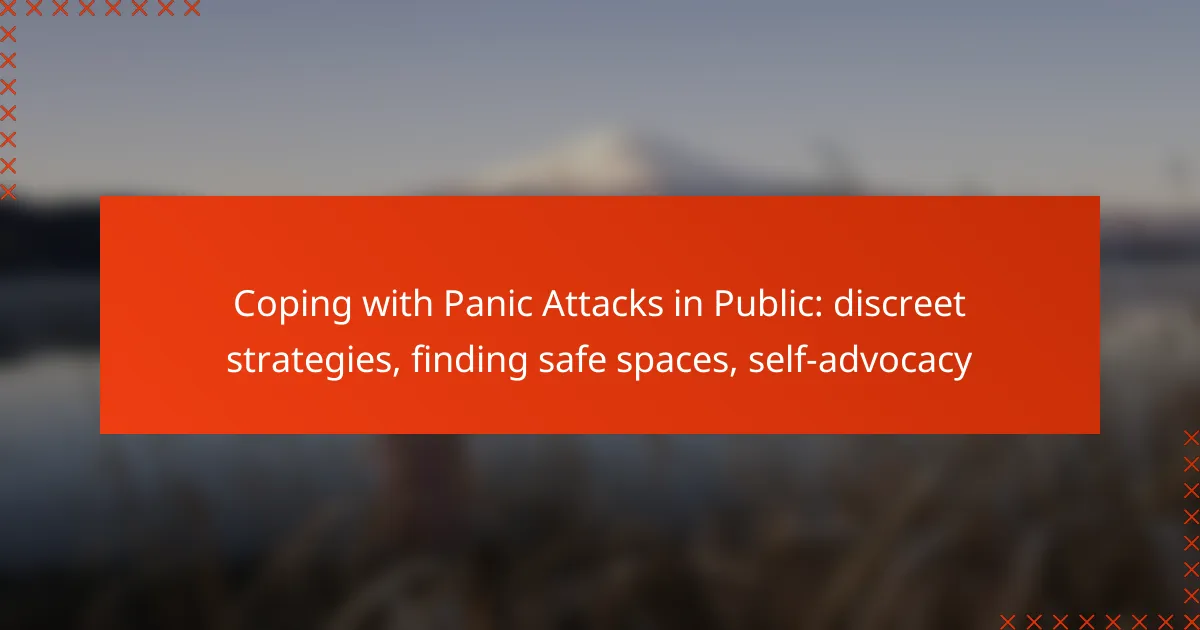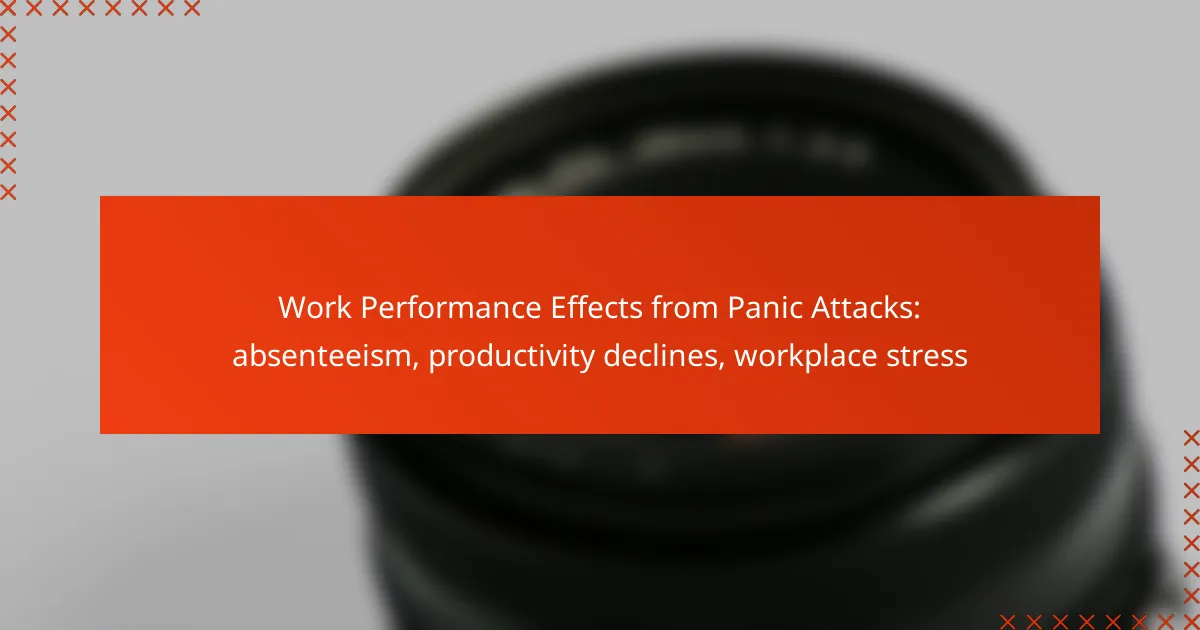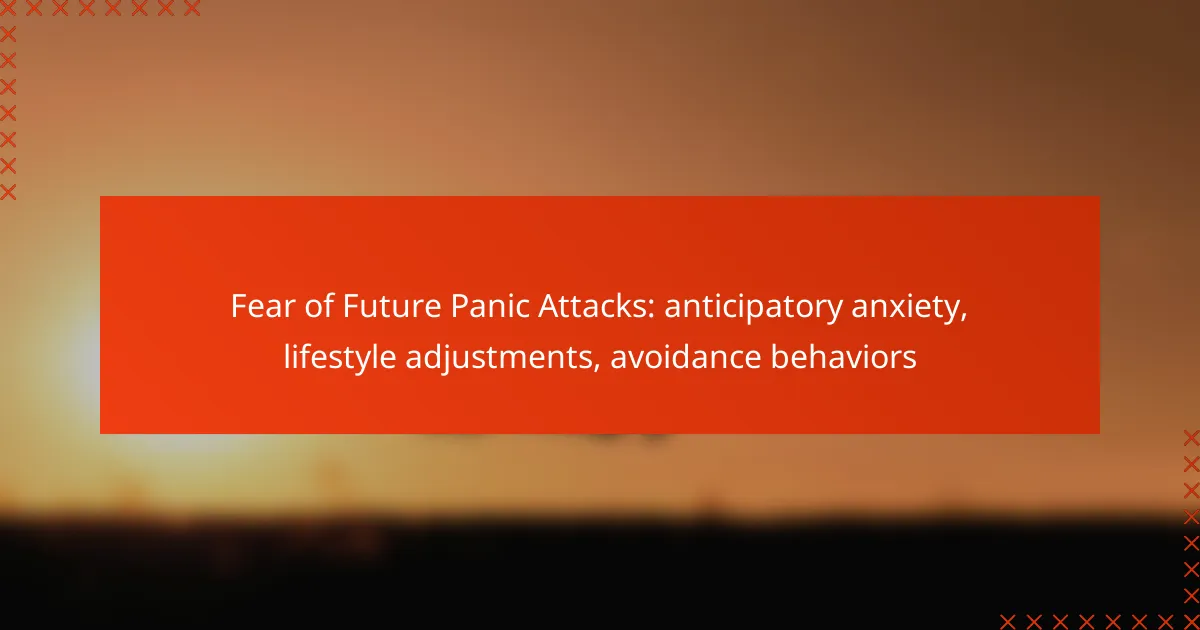Panic attacks can be particularly challenging when they occur in public settings, but there are discreet strategies to manage them effectively. By identifying safe spaces and advocating for your needs, you can create a supportive environment that helps mitigate anxiety. Implementing these techniques can empower you to regain control and navigate overwhelming situations with greater ease.

What discreet strategies can help during panic attacks in public?
Discreet strategies for managing panic attacks in public focus on techniques that can be employed without drawing attention. These methods can help regain control and reduce anxiety in challenging situations.
Breathing techniques
Breathing techniques are essential for calming the body during a panic attack. One effective method is the 4-7-8 technique: inhale for a count of four, hold for seven, and exhale for eight. Practicing this can help slow your heart rate and promote relaxation.
Another option is diaphragmatic breathing, which involves breathing deeply into your abdomen rather than your chest. This can be done discreetly and helps to reduce feelings of panic by increasing oxygen flow and activating the body’s relaxation response.
Grounding exercises
Grounding exercises help anchor you in the present moment, reducing feelings of disorientation during a panic attack. One simple method is the 5-4-3-2-1 technique, where you identify five things you can see, four things you can touch, three things you can hear, two things you can smell, and one thing you can taste.
These exercises can be performed quietly and can effectively shift your focus away from panic symptoms, helping you regain a sense of control and calm.
Mindfulness practices
Mindfulness practices encourage awareness of your thoughts and feelings without judgment. Techniques such as focusing on your breath or observing your surroundings can help you stay grounded during a panic attack.
Consider using apps that offer guided mindfulness sessions, which can be discreetly accessed on your phone. Engaging in these practices regularly can enhance your ability to cope with anxiety in public settings.
Using fidget tools
Fidget tools can provide a physical outlet for anxiety during panic attacks. Small items like stress balls, fidget spinners, or textured keychains can be easily carried and used discreetly to redirect nervous energy.
Choosing a tool that feels comfortable and helps you focus can make a significant difference. Experiment with different options to find what works best for you.
Distraction methods
Distraction methods can effectively divert your attention away from panic symptoms. Listening to music, podcasts, or audiobooks can provide a comforting escape and help shift your focus during an attack.
Engaging in a mental game, such as counting backward from 100 or reciting a favorite poem, can also serve as a useful distraction. The key is to find activities that are easily accessible and can be done quietly in public settings.

Where can I find safe spaces in public?
Safe spaces in public are areas designed to provide comfort and calm for individuals feeling overwhelmed. Identifying these locations can help manage panic attacks effectively when out in public settings.
Quiet areas in shopping centers
Many shopping centers have designated quiet areas where noise is minimized, allowing for a moment of respite. Look for seating areas away from busy walkways or near less frequented stores.
Some malls even provide sensory rooms specifically designed for relaxation. These spaces often feature soft lighting, comfortable seating, and calming decor, making them ideal for decompressing during stressful outings.
Designated relaxation zones in airports
Airports increasingly recognize the need for relaxation zones to help travelers cope with stress. These areas are typically equipped with comfortable seating, soothing music, and sometimes even meditation spaces.
Before your trip, check the airport’s website for information on these zones, as they can vary by location. Knowing where to find these spaces can significantly reduce anxiety during travel.
Calm spaces in parks
Parks often have designated quiet zones or gardens that provide a peaceful atmosphere away from the hustle and bustle. Look for secluded benches or areas with natural barriers like trees and shrubs.
Visiting during off-peak hours, such as early mornings or weekdays, can enhance the tranquility of these spaces. Bring along a book or some calming music to help you relax further.
Supportive environments in libraries
Libraries are typically designed to be quiet and calming, making them excellent safe spaces. Many libraries have designated reading areas or study rooms that provide a serene environment for those needing a break.
Take advantage of the library’s resources, such as mindfulness workshops or relaxation programs, which can offer additional support in managing anxiety. Remember to choose a spot away from busy sections to maximize your comfort.
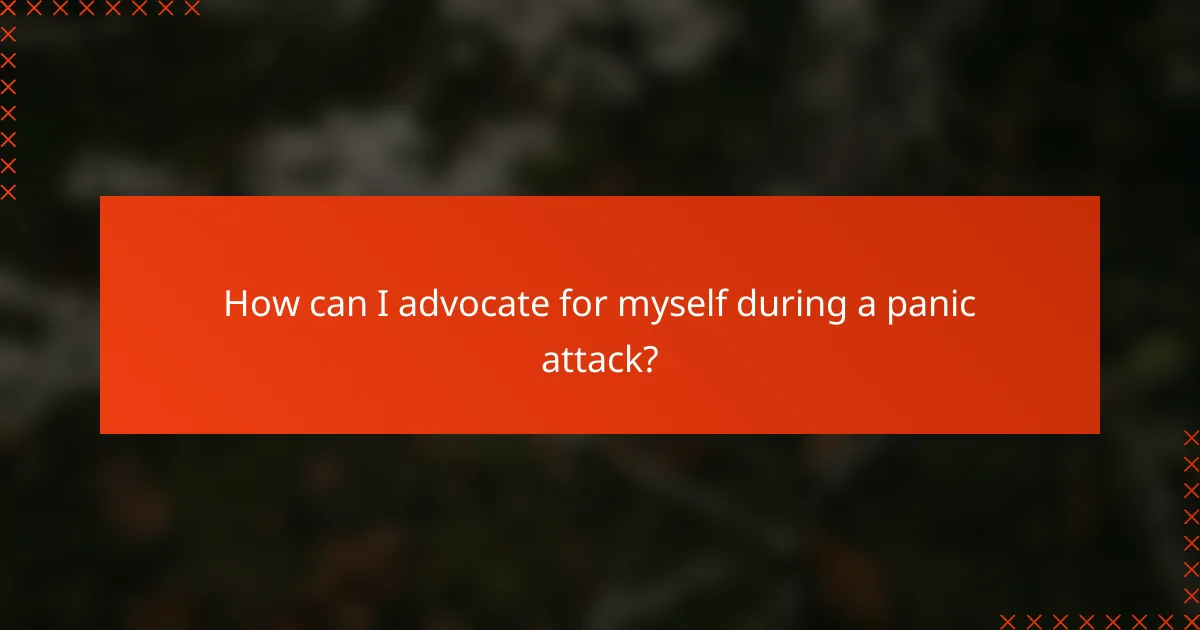
How can I advocate for myself during a panic attack?
Advocating for yourself during a panic attack involves clearly communicating your needs to others and seeking support. This can help create a safer environment and reduce feelings of isolation during distressing moments.
Communicating needs to staff
When experiencing a panic attack in a public space, it’s crucial to inform staff about your situation. Be direct and concise; for example, you might say, “I’m having a panic attack and need a quiet space.” Most staff are trained to assist in such situations and can help you find a safe area.
Consider practicing what you want to say beforehand to feel more comfortable. If possible, choose a time when the venue is less crowded, making it easier for staff to respond promptly to your needs.
Using panic attack cards
Panic attack cards are small, discreet cards that outline your condition and needs. These can be handed to staff or bystanders to quickly communicate your situation without needing to explain verbally. Include key information such as “I have anxiety” and “Please help me find a quiet space.”
Creating these cards can empower you and reduce anxiety about seeking help. Keep a few in your wallet or bag for easy access during outings.
Establishing a support network
Building a support network is essential for managing panic attacks. This network can include friends, family, or support groups who understand your triggers and can provide assistance when needed. Share your experiences and coping strategies with them to foster understanding.
Consider designating a “panic buddy” who can accompany you in public settings. This person can help you navigate stressful situations and provide reassurance, making it easier to cope with potential triggers.

What are the signs of a panic attack?
Panic attacks can manifest through a variety of signs, which typically include intense fear and physical discomfort. Recognizing these signs early can help individuals manage their experiences more effectively, especially in public settings.
Physical symptoms
Physical symptoms of a panic attack often include rapid heartbeat, shortness of breath, sweating, trembling, and dizziness. These symptoms can feel overwhelming and may mimic those of a heart attack, leading to increased anxiety. It’s crucial to remember that while these sensations are distressing, they are not life-threatening.
To cope with physical symptoms, practice deep breathing techniques. Inhale slowly through your nose for a count of four, hold for four, and exhale through your mouth for a count of four. This can help regulate your heart rate and reduce feelings of panic.
Emotional symptoms
Emotional symptoms during a panic attack may involve feelings of impending doom, fear of losing control, or a sense of detachment from reality. These emotional responses can heighten the overall experience of panic, making it essential to address them directly.
One effective strategy is to ground yourself by focusing on your surroundings. Identify and describe five things you can see, four things you can touch, three things you can hear, two things you can smell, and one thing you can taste. This technique helps redirect your focus and can alleviate some of the emotional distress associated with panic attacks.
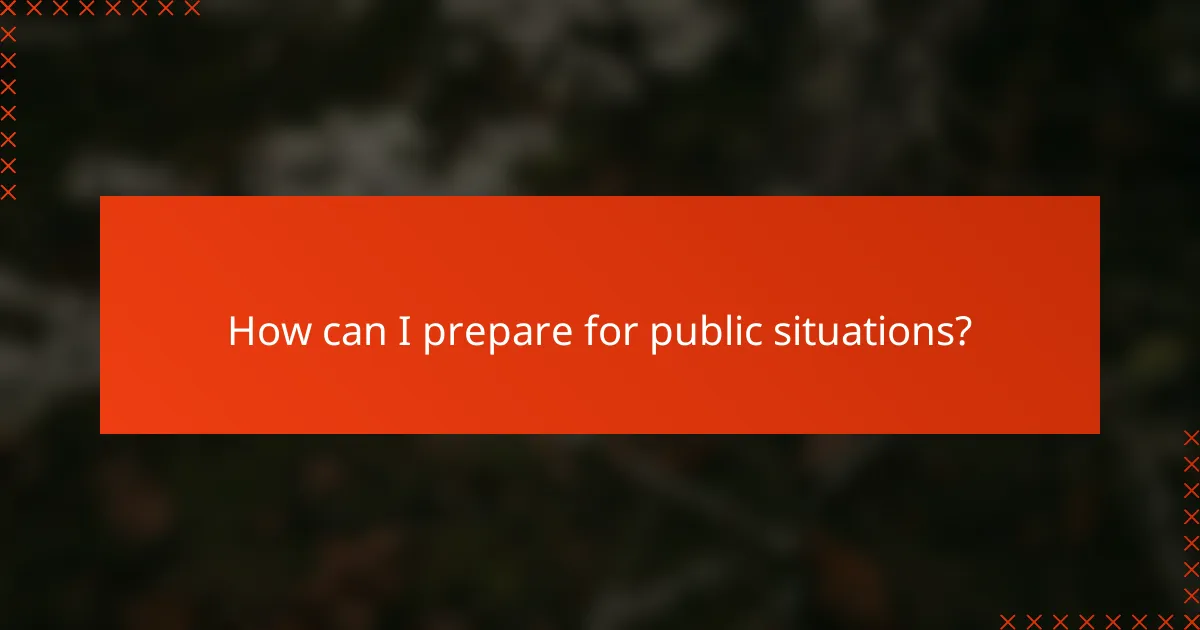
How can I prepare for public situations?
Preparing for public situations involves creating strategies to manage anxiety and ensure a sense of safety. By anticipating potential triggers and having coping mechanisms in place, you can navigate these environments more comfortably.
Creating a coping plan
A coping plan is a personalized strategy that outlines specific actions to take when feeling anxious in public. Start by identifying your triggers and the symptoms you experience during a panic attack. This awareness will help you develop tailored responses.
Include techniques such as deep breathing, grounding exercises, or using a fidget tool. Write down these strategies and practice them regularly, so they become second nature when you need them most.
Consider sharing your coping plan with trusted friends or family members who can support you in public settings. This can enhance your confidence and provide reassurance when anxiety arises.
Practicing exposure techniques
Exposure techniques involve gradually facing your fears in controlled settings to reduce anxiety over time. Start with less intimidating situations, such as visiting a quiet café, and progressively move to busier environments.
Set realistic goals for each exposure session, aiming for short durations at first, then gradually increasing the time spent in these situations. Keep a journal to track your progress and reflect on your experiences.
Remember to reward yourself after each successful exposure. This positive reinforcement can motivate you to continue facing your fears and help solidify your coping strategies.
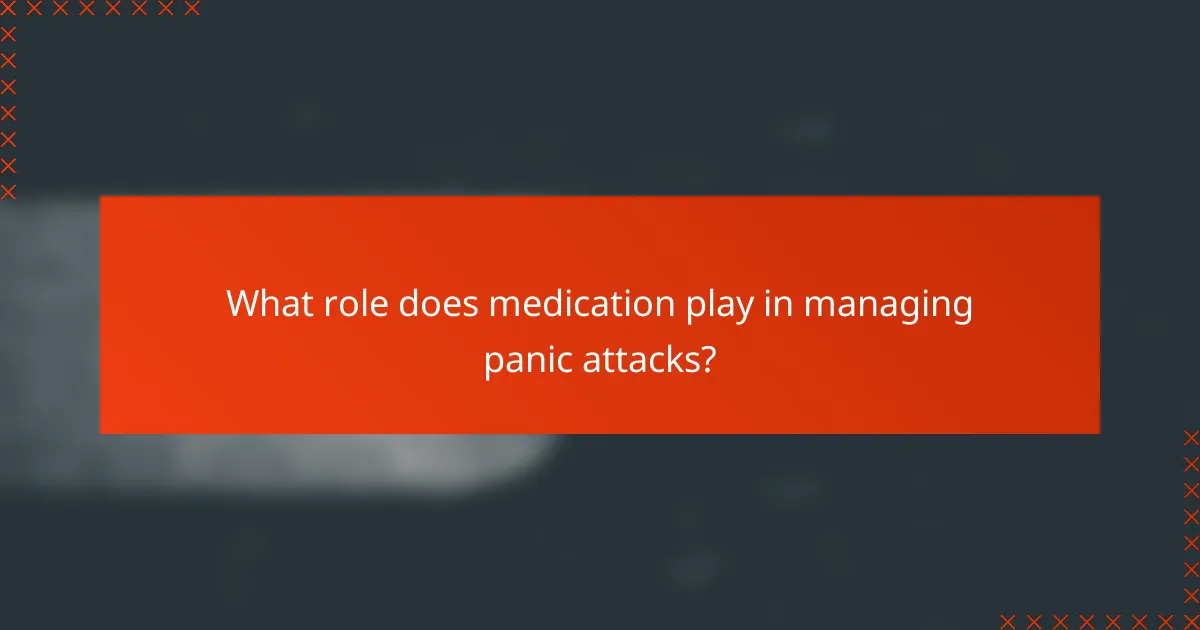
What role does medication play in managing panic attacks?
Medication can be an effective component in managing panic attacks, often used alongside therapy and lifestyle changes. It helps to alleviate symptoms and reduce the frequency of attacks, allowing individuals to regain a sense of control.
Types of medications
Common types of medications for panic attacks include selective serotonin reuptake inhibitors (SSRIs), benzodiazepines, and serotonin-norepinephrine reuptake inhibitors (SNRIs). SSRIs, such as fluoxetine and sertraline, are often prescribed for long-term management, while benzodiazepines, like lorazepam, may be used for immediate relief during an attack.
Each medication type has its benefits and drawbacks. SSRIs generally take several weeks to become effective but have fewer risks of dependency compared to benzodiazepines, which provide quick relief but can lead to tolerance and withdrawal issues if used long-term.
Consulting healthcare professionals
Consulting healthcare professionals is crucial for determining the right medication and dosage for managing panic attacks. A psychiatrist or primary care physician can evaluate individual symptoms and medical history to tailor a treatment plan that suits specific needs.
During consultations, be open about your experiences and any side effects from previous medications. Regular follow-ups are essential to monitor progress and make necessary adjustments, ensuring the chosen medication effectively addresses panic attack symptoms without causing significant side effects.
